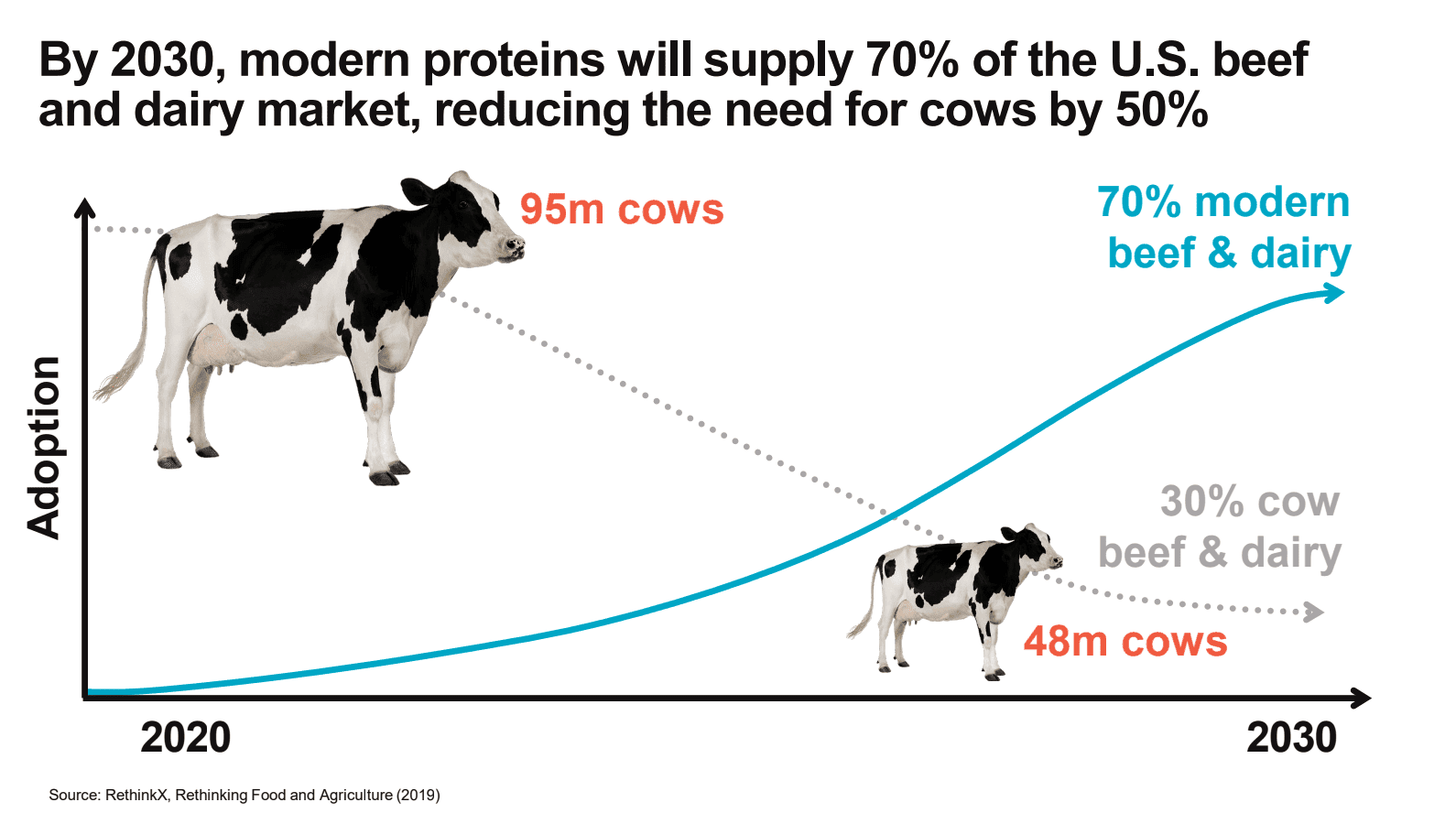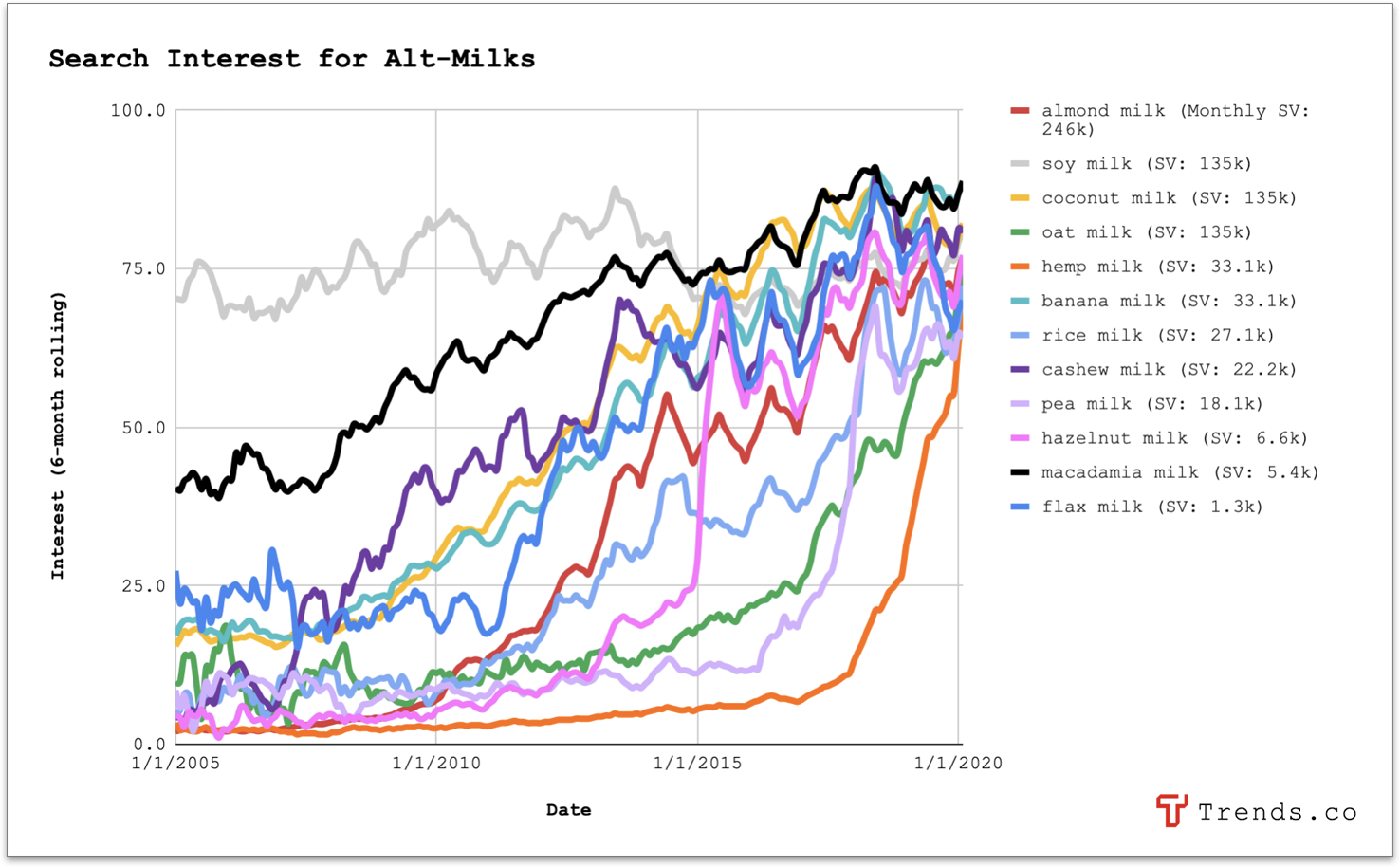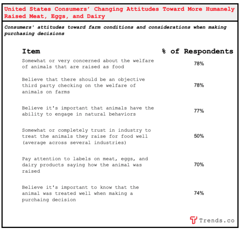nlopchantamang.com
Goodbye, Dairy Farms. Hello, Lab Milk.
Aja Frost @ajavuu

<em>Source: Google Trends and Keywords Everywhere</em>
The signal: Years ago, the thought of drinking lab milk made our stomachs turn. But recent developments in alternative milk have changed our minds. RethinkX’s recent Food and Agriculture report estimates that the cow milk industry will be near bankrupt by 2030, with a major disruptor being milk made with precision fermentation.

Milk is losing its footing
Milk consumption has been not-so-slowly falling for years, and it’s starting to hit home. Borden Dairy, a 163-year old milk processor, filed for bankruptcy protection last month. In November, Dean Foods -- America’s largest milk producer -- did the same. The smaller players aren’t in the clear, either: 94k dairy farms have gone out of business since 1992. Meanwhile, farm debt is at a record high ($416B).
Cows continue to make a stink
With livestock responsible for an estimated 14.5% of greenhouse gas emissions, many consumers are pressuring companies to pivot to more sustainable solutions. RethinkX believes lab-made solutions will be cheaper and higher quality, stating that precision fermentation will lead to proteins being 5x cheaper by 2030 and 10x cheaper by 2035, as compared to their cow counterparts.
The opportunity: The obvious opportunity is building or investing in a budding software-led food company. Perfect Day, for example, recently raised their $140m Series C. But those aren’t the only milk-related opps:

Source: Google Trends and Keywords Everywhere
Alt-milks: As more people wave goodbye to dairy, alternative milk is slowly taking over; it has already cornered 13% of the market. With the exception of soy milk, all of the alt-milks have been on the up, with some of the newer entrants including hemp milk and pea milk. Other alt-products are getting attention, including cashew cheese, with 18100 searches per month.
What happens to the farmers? Millions, some even estimate a billion, are indirectly involved with milk production across hundreds of millions of dairy farms worldwide. As dairy milk goes dark, farmers are left with few options.
- Organic farming: Some can pivot to organic farming, which is taking off (certifications were up 58% between 2011 and 2016). But the high cost of organic farming isn’t possible for many struggling farmers.
- Transition support: Unfortunately, the dire conditions have resulted in a spike of farmer suicides, with Farm Aid (a 1-800 hotline for farmers in crisis) seeing a 109% spike in calls last year. The Farmer’s First Act dedicated $50m over 5 years for behavioral health for struggling farmers, and there may also be opportunities to build businesses directly supporting farmers transitioning to new roles (think the Last Mile, but for farmers).

Leave a Comment